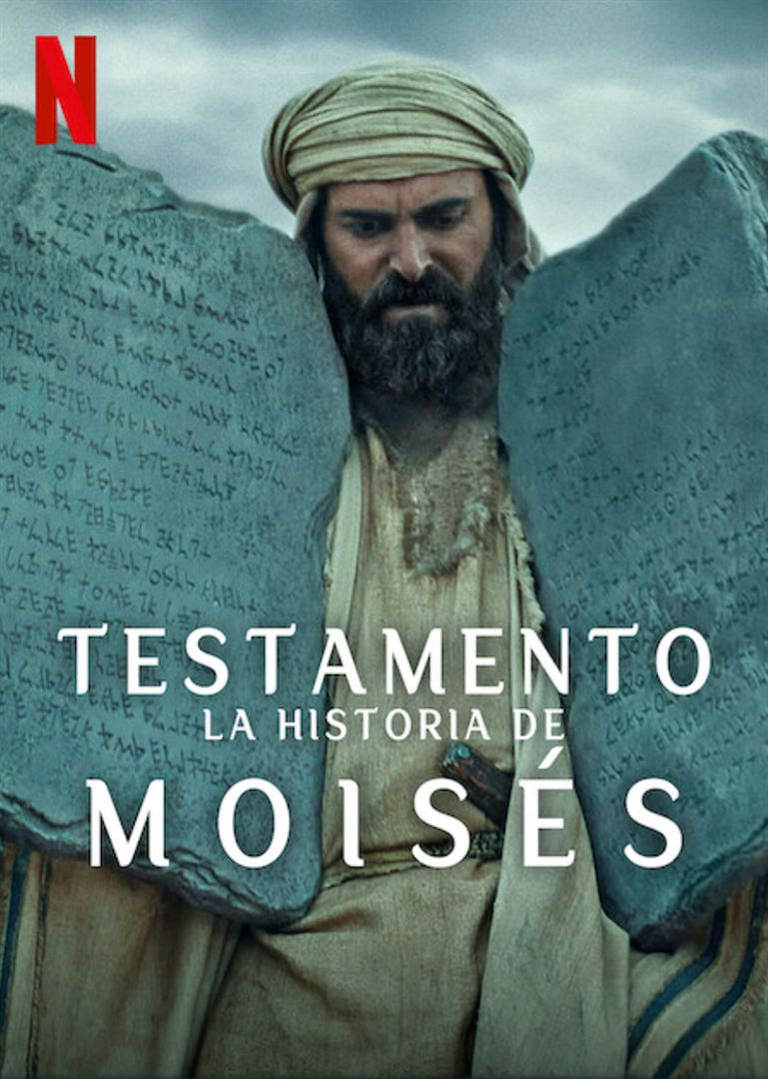

The series combines interviews with experts, historical re-enactments and analysis of ancient texts to offer a complete and captivating vision of the life of Moses), is a theme that I have experienced since my early years on the cinema screens of my village on the banks of the Orinoco. I was irresistibly attracted by the special effects of Moses' snakes fighting with the reptiles of the Pharaoh's priests. Also, it captured my imagination, the touch of the rod to divide the waters of the sea and turn it into a highway along which the redeemed Jewish nation moves from Egypt's slave system. Its principal performers, such as Charlton Heston, Yul Bryner, Anne Baxter, are among that range of valuable character actors. I recall the set designs and fabulous make-up. All this linked to the epic propulsion conveyed by this story that tends to be more fact than fiction.
La serie combina entrevistas con expertos, recreaciones históricas y análisis de textos antiguos para ofrecer una visión completa y cautivadora de la vida de Moisés.), es una temática que la he vivido desde mi temprana edad en las pantallas de los cines de mi pueblo a orillas del Orinoco. Me atraen irresistiblemente los efectos especiales de la lucha de las culebras de Moisés con los reptiles de los sacerdotes del faraón. También, me capturó la imaginación, el toque de la vara para dividir las aguas del mar y convertir una autopista por donde se desplaza la redimida nación judía del sistema esclavista de Egipto. Sus artistas principales, como Charlton Heston, Yul Bryner, Anne Baxter, están entre esa gama de valiosos actores de carácter.
Rememoro las escenografías y fabulosos maquillajes. Todo esto vinculado con la propulsión épica que transmite esta historia que tiende a ser más realidad que ficción.
Synopsis of the film Testament: The Story of Moses (Moshe)
Testament: The Story of Moses (Moshe) is a documentary film that depicts the life and heritage testimony of this leader from a historical and theological perspective. This production delves into biblical accounts and archaeological research to offer an in-depth and diverse view of this iconic figure in the history of Judaism and Christianity.
The dramatic navigation of the waters of the baby's basket and his rescue by the Pharaoh's daughter are highlighted in this fabulously scenic film. The upbringing as a prince in the Egyptian court and the unveiling of his Hebrew origins.
The moment when Moses takes up the mission to liberate the people of Israel from slavery. The exodus of the Israelites from Egypt, the Ten Commandments and the journey through the desert are then detailed.
I am attracted by the way in which the influence of Moses' legacy and its predominant influence on the history of Judaism, Islam and Christianity is analysed. This cinematic enterprise harmonises interviews with expert references, historical re-enactments and dialectical analysis of these ancient texts to offer a comprehensive and captivating assessment and insight into the life of Moses.
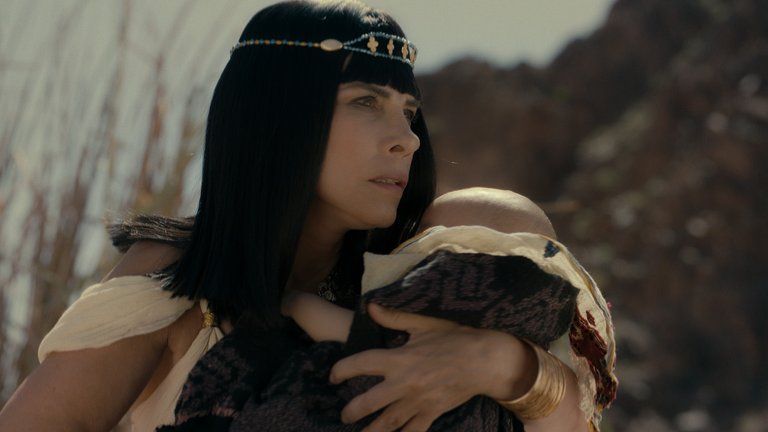

Sinopsis de la película Testamento: La historia de Moisés (Moshé)
Testamento: La historia de Moisés (Moshé), es un documental que muestra la vida y el testimonio patrimonial de este líder desde una perspectiva histórica y teológica. Esta producción se adentra en los relatos bíblicos y las investigaciones arqueológicas para ofrecer una visión profunda y diversa de este personaje icónico en la historia del judaísmo y el cristianismo.
En este film destaca con un fabuloso paisaje la puesta en escena la dramática navegación por las aguas de la cesta del bebe y su rescate por parte de la hija del faraón. La crianza como un príncipe en la corte egipcia y el desvelamiento de sus orígenes hebreos.
Se expone el momento en que Moisés asume la misión de liberar al pueblo de Israel de la esclavitud. Seguidamente, se pormenoriza el éxodo de los israelitas de Egipto, los diez mandamientos y la travesía por el desierto.
Me atrae la forma como se analiza la influencia del legado de Moisés y su predominante influjo en la historia del judaísmo, islamismo y el cristianismo. Esta empresa cinematográfica armoniza las entrevistas con expertos referentes, recreaciones históricas y análisis dialéctico de estos textos antiguos para ofrecer la valoración, visión completa y cautivadora de la vida de Moisés.
The cast and direction of the production Testament: The Story of Moses.
Benjamin Ross, directs this production. Ross has experience in documentaries and historical series, which allows him to give the series a visually appealing and narratively captivating approach.
‘Testament: The Story of Moses’ features the participation of relevant historical and religious figures and references who contribute their knowledge and perspectives on the life of Moses. Some of the prominent names are:
Charles Dance is a magnificent British actor, known for his role as Tywin Lannister in ‘Game of Thrones’, he is in charge of narrating the production, providing a recreating and captivating voice.
Avi Azulay, an Israeli actor, plays the role of Moshe in the historical re-enactments presented in the play.
Mehmet Kurtuluş is a spectacular Turkish actor who plays the role of the Pharaoh.
Dominique Tipper, I love this British actress who plays the role of Sephora, Moses' wife. With this actress, the paradigmatic break with actresses with impeccably white skin colour is provoked. This beautiful woman has the tanned skin colour of the ancestral skin of the Jewish nation.
Ishai Golan, another Israeli actor, plays the role of Aaron, Moses' brother.
Reymonde Amsellem Nidam, this beautiful woman, is the Israeli actress who plays the role of Miryam, Moses' sister.
El reparto y dirección de la producción Testamento: La historia de Moisés.
Benjamin Ross, dirige esta producción. Ross tiene experiencia en documentales y series históricas, lo que le permite darle a la serie un enfoque visualmente atractivo y narrativamente cautivador.
"Testamento: La historia de Moisés" cuenta con la participación de referentes y figuras relevantes en el ámbito histórico y religioso que aportan sus conocimientos y perspectivas sobre la vida de Moisés. Algunos de los nombres destacados son:
Charles Dance es un magnífico actor británico, conocido por su papel de Tywin Lannister en "Game of Thrones", se encarga de narrar la producción, proporcionando una voz recreadora y cautivadora.
Avi Azulay, es un actor israelí que interpreta el papel de Moshé en las recreaciones históricas que se presentan en la obra.
Mehmet Kurtuluş es un espectacular actor turco que interpreta el papel del faraón.
Dominique Tipper, me encanta esta actriz británica que interpreta el papel de Séfora, la esposa de Moisés. Con esta actriz se provoca la ruptura paradigmática de las actrices con el color de la piel impecablemente blanca. Esta preciosa mujer tiene el color moreno de la piel ancestral de la nación judía.
Ishai Golan, este es otro actor israelí que interpreta el papel de Aarón, hermano de Moisés.
Reymonde Amsellem Nidam, esta bella mujer, es la actriz israelí que interpreta el papel de Miryam, hermana de Moisés.
Estoy seducido por este abordaje fílmico con el movimiento de este reparto porque el trabajo documental se expresa con hombres y mujeres reales de la raigambre de la cultura judía.
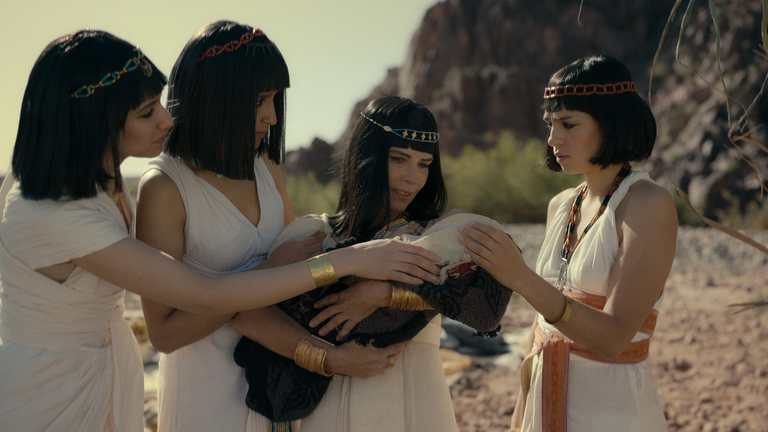

The set design, visual effects and colour palette of Testament: The Story of Moses immerses me from my comfortable sofa in the living room of my flat into the world of the Testament and magnetically draws me in with its epic and evocative atmosphere.
The scenography
I am in awe of the scale of the set design, from the simple to the exuberant.
The producers go to great lengths to recreate the opulence and power of ancient Egypt, with pharaonic palaces, majestic temples and vibrant marketplaces. They take great care in the architectural detail with the setting of each scene to transport us to this ancient civilisation.
The vast deserts of the Sinai Peninsula are realistically depicted, highlighting the vastness and harshness of the environment in which Moses and the Israelites wandered for forty years.
The summit of Mount Sinai, where Moses receives the Ten Commandments, is externalised as the sacred and mysterious place, surrounded by clouds and lightning.
La escenografía, los efectos visuales y la paleta de colores de "Testamento: La historia de Moisés" me sumerge en la sala del apartamento desde mi cómodo sofá en el mundo testimonial y me atrae magnéticamente con esa atmósfera épica y evocadora.
La escenografía
Estoy maravillado por la magnitud de la escenografía que está diseñada, desde lo sencillo hasta la exuberancia.
Los productores se esmeran en recrear la opulencia y el poder del antiguo Egipto, con palacios faraónicos, templos majestuosos y mercados vibrantes. Se esmeran en los detalles arquitectónicos con la ambientación de cada escena para transportarnos a esta civilización milenaria.
Los vastos desiertos de la península del Sinaí se representan con gran realismo, resaltando la inmensidad y la dureza del entorno en el que Moisés y los israelitas vagaron durante cuarenta años.
La cima del monte Sinaí, donde Moisés recibe los Diez Mandamientos, se exterioriza como el lugar sagrado y misterioso, rodeado de nubes y rayos.
Visual effects
Visual effects are used to depict the wonders attributed to Moses, such as the parting of the waters of the Red Sea, the falling of the manna from heaven and the plagues of Egypt. These special effects are intended to generate visual impact and reinforce the idea of science fiction and the supernatural in the story of Moses' life.
The landscapes of Egypt and the desert are digitally animated and recreated to expand the scale and drama of the scenes.
In addition, visual effects techniques are used to create crowds of people, helping to convey the magnitude of the historical events depicted.
Efectos visuales
Los efectos visuales se utilizan para representar los prodigios atribuidos a Moisés, como la separación de las aguas del Mar Rojo, la caída del maná del cielo y las plagas de Egipto. Estos efectos especiales buscan generar un impacto visual y reforzar la idea de la ciencia ficción y lo sobrenatural en la historia de la vida de Moshé.
Los paisajes de Egipto y el desierto se animan y recrean digitalmente para ampliar la escala y la espectacularidad de las escenas.
Además, se emplean las técnicas de los efectos visuales para crear multitudes de personas, lo que contribuye a transmitir la magnitud de los eventos históricos narrados.
Colour palette
Warm tones such as gold, ochre and red predominate to represent desert light, fire and divinity. These colours convey a sense of warmth, spirituality and power.
Cool tones such as blue and green are used to represent water, night and moments of darkness or sadness. These colours contrast with the warm tones and generate a greater visual impact.
The contrast between light and dark, warm and cold colours, are used consistently and rationally to emphasise the dramatic moments of the story and create a visually striking atmosphere.
In particular, the set design, visual effects and colour palette of ‘Testament: The Story of Moses’ are designed to create an immersive visual experience that induces transport into the biblical world. The production is exciting because it highlights the spiritual leadership of the story of Moses.
Paleta de colores
Predominan los tonos cálidos como el dorado, el ocre y el rojo para representar la luz del desierto, el fuego y la divinidad. Estos colores transmiten una sensación de calidez, espiritualidad y poder.
Los tonos fríos como el azul y el verde se utilizan para representar el agua, la noche y los momentos de oscuridad o tristeza. Estos colores contrastan con los tonos cálidos y generan un mayor impacto visual.
El contraste entre la luz y la oscuridad, los colores cálidos y fríos, se utilizan coherente y racionalmente para enfatizar los momentos dramáticos de la historia y crear una atmósfera visualmente impactante.
En especial, la escenografía, los efectos visuales y la paleta de colores de "Testamento: La historia de Moisés" están diseñadas para crear una experiencia visual inmersiva que induce a transportar al mundo bíblico. La producción es emocionante porque destaca el liderazgo espiritual de la historia de Moisés.
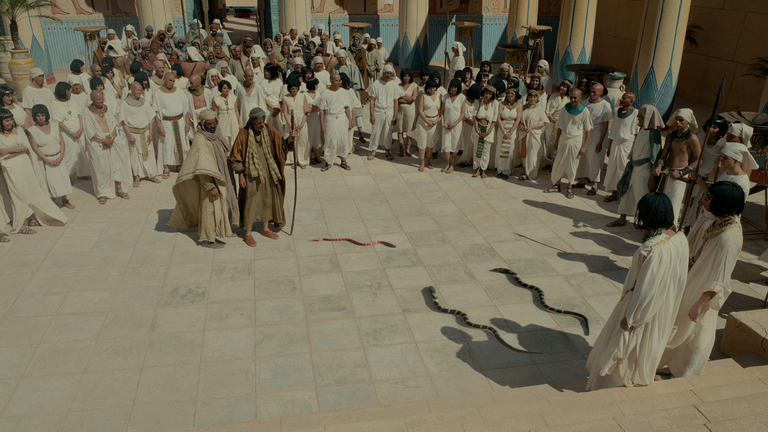

Musa (Moses) in Islam.
The theological representation of Moses (Musa) in Islam is the first time I have had the opportunity to appreciate and appreciate this Arab religious stream.
Moses (Musa in Arabic) is a prophetic figure of utmost spiritual substance in Islam, just as he is in Judaism and Christianity. His story is narrated prominently in the Qur'an, where he is presented as a messenger of God (Allah) sent to guide the people of Israel and free them from the oppression of Pharaoh. This grabbed me irresistibly.
Musa, prophet in Islam.
In this literal framing I will refer to Musa (Moses) as one of the most prominent prophets in the Qur'an, indeed, surpassing the prophet Muhammad. This frequency reflects the importance they attach to his leadership and message in salvation history.
As in other Abrahamic religions, Musa is considered a prophet of Allah, who received direct revelations from God. His primary mission was to convey the message of monotheism and to liberate the people of Israel from slavery.
Musa is a role model for believers, especially for his unwavering faith, patience and obedience to God.
The Qur'an recounts Musa's meeting with God on Mount Sinai, where he received the Ten Commandments, as in the Bible. This event is considered a fundamental cultural heritage landmark in human history.
As in the Bible, Musa performs numerous wonders to demonstrate his spiritual authority and to convince Pharaoh and the people. These prodigies include the transformation of his staff into a serpent, the parting of the Red Sea and the plagues of Egypt.
Musa is considered the lawgiver who delivered the Law of God to his people. This law, based on the Ten Commandments, establishes the fundamental rules and principles of religious and moral life.
In Islam, the story of Musa. It touches me because it is seen as part of the larger salvation story, that Christian and Judaic worldview in which all the prophets, from Adam to Mohammed, have been sent to lead humanity to God.
Musa (Moshé) en el Islam.
La representación teológica de Moisés (Musa) en el Islam es la primera vez que tengo la oportunidad de apreciar y valorar de esta corriente religiosa árabe.
Moisés (Musa en árabe) es una figura profética de suma substancia espiritual en el Islam, al igual que lo es en el judaísmo y el cristianismo. Su historia es narrada, destacadamente, en el Corán, donde se le presenta como un mensajero de Dios (Alá) enviado para guiar al pueblo de Israel y liberarlo de la opresión del faraón. Esto me atrapó irresistiblemente.
Musa, profeta en el Islam.
En este encuadre literal voy a referirme a Musa (Moisés) como uno de los profetas más destacados en el Corán, es más, supera al profeta Mahoma. Esta frecuencia refleja la importancia que le otorgan a su liderazgo y mensaje en la historia de la salvación.
Al igual que en otras religiones abrahámicas, Musa es considerado un profeta de Ala, que recibió revelaciones directas de Dios. Su misión principal fue transmitir el mensaje del monoteísmo y liberar al pueblo de Israel de la esclavitud.
Musa es un modelo a seguir para los creyentes, especialmente por su fe inquebrantable, su paciencia y su obediencia a Dios.
El Corán narra el encuentro de Musa con Dios en el monte Sinaí, donde recibió los Diez Mandamientos, al igual que en la Biblia. Este evento es considerado un hito cultural patrimonial fundamental en la historia de la humanidad.
Al igual que en la Biblia, Musa realiza numerosos prodigios para demostrar su autoridad espiritual y convencer al faraón y al pueblo. Estos prodigios incluyen la transformación de su bastón en serpiente, la separación del Mar Rojo y las plagas de Egipto.
Musa es considerado el legislador que entregó la Ley de Dios a su pueblo. Esta ley, basada en los Diez Mandamientos, establece las normas y los principios fundamentales de la vida religiosa y moral.
En el Islam, la historia de Musa. Me conmueve porque es vista como parte de la historia de la salvación más amplia, que la cosmovisión cristiana y judaica en la que todos los profetas, desde Adán hasta Mahoma, han sido enviados para guiar a la humanidad hacia Dios.
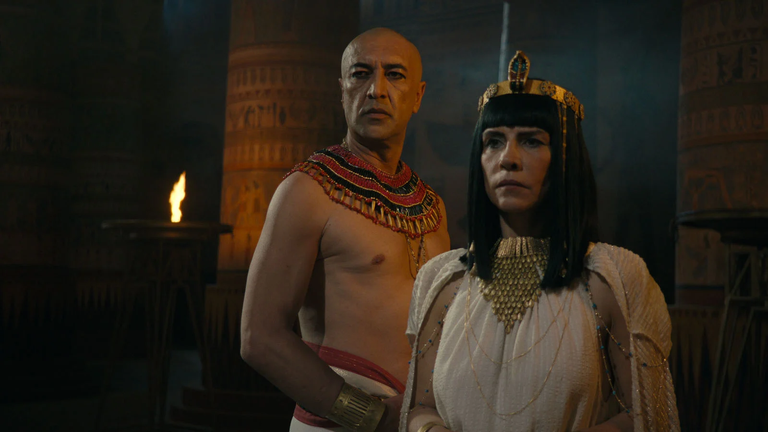

Musa and Muhammad
I am drawn to the special link between Musa and Muhammad in the Islamic tradition. Some of the aspects that connect the two prophets are:
Musa and Muhammad were sent by God to guide their respective peoples towards truth and justice.
Both prophets faced opposition and persecution from their contemporaries.
Both Musa and Muhammad performed spectacular wonders to demonstrate their spiritual leadership.
Both prophets received divine revelations that were passed on to their followers.
Asi pues, Musa occupies a central place in Islamic theology. His story serves as an inspiration for believers and as a vade mecum of the importance of faith, obedience to God and the struggle for justice. The figure of Musa connects Islam with the other Abrahamic religions and underlines the fundamental unity of the divine messages.
Musa y Mahoma
Estoy atraído por el vínculo especial entre Musa y Mahoma en la tradición islámica. Algunos de los aspectos que conectan a ambos profetas son:
Musa como Mahoma fueron enviados por Dios para guiar a sus respectivos pueblos hacia la verdad y la justicia.
Ambos profetas enfrentaron la oposición y la persecución de sus contemporáneos.
Tanto Musa como Mahoma realizaron espectaculares prodigios para demostrar su liderazgo espiritual.
Ambos profetas recibieron revelaciones divinas que fueron transmitidas a sus seguidores.
Así pues, Musa ocupa un lugar central en la teología islámica. Su historia sirve como inspiración para los creyentes y como un vademécum de la importancia de la fe, la obediencia a Dios y la lucha por la justicia. La figura de Musa conecta el Islam con las otras religiones abrahámicas y subraya la unidad fundamental de los mensajes divinos.
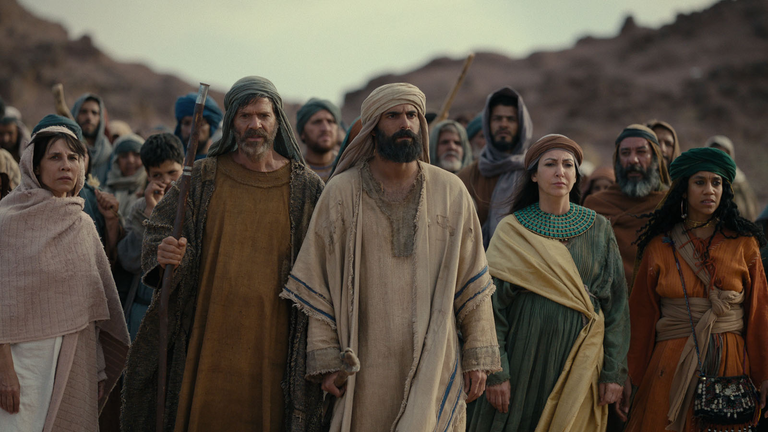

The Importance of the Ten Commandments in Islam
The Ten Commandments, received by Musa at Mount Sinai, are fundamental to both Judaism and Christianity. In Islam, although they are not explicitly mentioned as ‘Ten Commandments’, the ethical and moral principles underlying them are widely recognised and taught. The principles of the Ten Commandments, such as the prohibition of murder, theft and adultery, are considered universal and timeless principles.
The ethical and moral principles contained in the Ten Commandments have influenced the development of Islamic law (Sharia). Musa is therefore one of the most important figures in Islam, and his story has left a profound mark on Islamic religion, culture and art. His role as prophet, lawgiver and role model makes him a central figure in the Islamic tradition.
Musa, in the Islamic context, is presented as a prophet who preached peace and submission to God. His main message was the one worship of Allah and the liberation of the people of Israel from oppression. The violence in his story, such as the parting of the Red Sea, is interpreted as divine intervention to liberate an oppressed people, not as a promotion of violence as a means to an end. Moses is rather a symbol of patience, perseverance and submission to the divine will.
La Importancia de los Diez Mandamientos en el Islam
Los Diez Mandamientos, recibidos por Musa en el monte Sinaí, son fundamentales tanto en el judaísmo como en el cristianismo. En el Islam, aunque no se mencionan explícitamente como "Diez Mandamientos", los principios éticos y morales que subyacen en ellos son ampliamente reconocidos y enseñados. Los principios de los Diez Mandamientos, como la prohibición del asesinato, el robo y el adulterio, son considerados principios universales y atemporales.
Los principios éticos y morales contenidos en los Diez Mandamientos han influido en el desarrollo de la ley islámica (Sharia). Por lo tanto, la figura de Musa es una de las más importantes en el Islam, y su historia ha dejado una huella profunda en la religión, la cultura y el arte islámicos. Su papel como profeta, legislador y modelo a seguir lo convierte en una figura central en la tradición islámica.
Musa en el contexto islámico, es presentado como un profeta que predicaba la paz y la sumisión a Dios. Su mensaje principal era la adoración única de Alá y la liberación del pueblo de Israel de la opresión. La violencia en su historia, como la separación del Mar Rojo, se interpreta como una intervención divina para liberar a un pueblo oprimido, no como una promoción de la violencia como medio para alcanzar un fin. Moisés es más bien un símbolo de paciencia, perseverancia y sumisión a la voluntad divina.
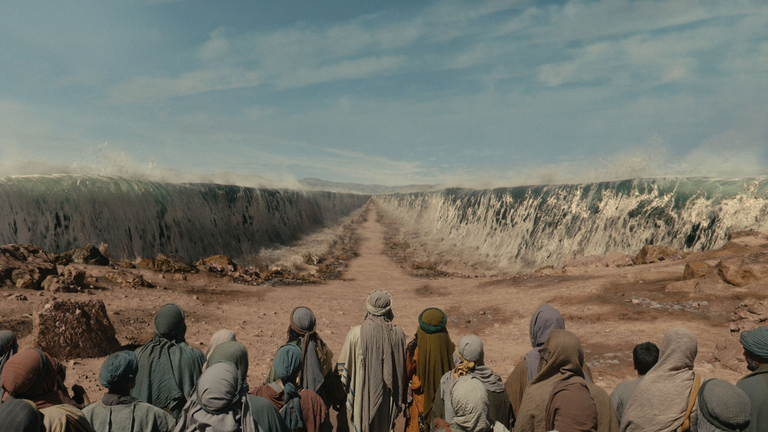

Moshe and the Formation of Jewish Identity
While Moshe is a central figure in Judaism and Islam, it is important to note that his role in the formation of Jewish identity is different.
Judaism: In Judaism, Moshe is considered the lawgiver who received the Ten Commandments directly from God. His leadership was instrumental in the formation of the Jewish people as a nation and in the creation of their religious identity.
Islam: In Islam, Musa is one of many prophets and his story is part of a larger narrative of salvation history. While his role is important, it is not exclusive in the formation of Islamic identity.
In conclusion, Musa is a complex and multifaceted figure in Islam. His story transcends religious boundaries and continues to inspire millions of people around the world. His legacy as a prophet, leader and role model of faith remains relevant today.
This piece of film culture entertained me and enriches my worldview of Moses (Musa), the spiritual leader of humanity. It is timely that you have the opportunity to enjoy this film production.
Moshé y la Formación de la Identidad Judía
Si bien Moshé es una figura central en el judaísmo y en el Islam, es importante destacar que su papel en la formación de la identidad judía es diferente.
Judaísmo: En el judaísmo, Musa es considerado el legislador que recibió los Diez Mandamientos directamente de Dios. Su liderazgo fue fundamental en la formación del pueblo judío como una nación y en la creación de su identidad religiosa.
Islam: En el Islam, Musa es uno de muchos profetas y su historia es parte de una narrativa más amplia sobre la historia de la salvación. Si bien su papel es importante, no es exclusivo en la formación de la identidad islámica.
En conclusión, Musa es una figura compleja y multifacética en el Islam. Su historia trasciende las fronteras religiosas y continúa inspirando a millones de personas en todo el mundo. Su legado como profeta, líder y modelo de fe sigue siendo relevante en la actualidad.
Esta pieza de la cultura del cine, me entretuvo y enriquece mi cosmovisión de Moisés (Musa), líder espiritual de la humanidad. Es oportuno que tengan la oportunidad de disfrutar esta producción cinematográfica
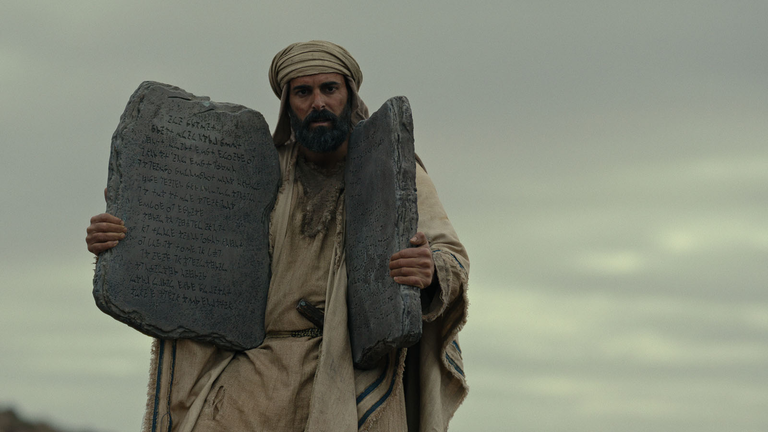

Moshe or Moses and Leadership
Moses is considered an exceptional leader in Islam. His leadership is characterised by:
His unwavering faith in God, even in the most difficult of times. Moreover, whatever trials and emotional pressures he endured, Moshe always maintained patience and trust in God. Moshe always sought justice and fairness for his people. Moshe's leadership position was always humble and he recognised that his power came from God.
Moses is a role model for Muslim leaders, who should inspire their communities with their faith, justice and humility.
Moshé o Musa y el Liderazgo.
Musa es considerado un líder excepcional en el Islam. Su liderazgo se caracteriza por:
Su Fe inquebrantable en Dios, incluso en los momentos más difíciles. Es más, las pruebas y presiones emocionales que soporto, Moshé siempre mantuvo la paciencia y la confianza en Dios. Musa siempre buscó la justicia y la equidad para su pueblo. La posición del liderazgo de Musa siempre se mostró humilde y reconoció que su poder provenía de Dios.
Musa es un modelo a seguir para los líderes musulmanes, quienes deben inspirar a sus comunidades con su fe, su justicia y su humildad.
Musa, prophet in Islam
In this literal framing I will refer to Musa (Moses) as one of the most prominent prophets in the Qur'an, indeed, surpassing the prophet Muhammad. This frequency reflects the importance they attach to his leadership and message in salvation history.
As in other Abrahamic religions, Musa is considered a prophet of Allah, who received direct revelations from God. His primary mission was to convey the message of monotheism and to liberate the people of Israel from slavery.
Musa is a role model for believers, especially for his unwavering faith, patience and obedience to God.
Musa, profeta en el Islam
En este encuadre literal voy a referirme a Musa (Moisés) como uno de los profetas más destacados en el Corán, es más, supera al profeta Mahoma. Esta frecuencia refleja la importancia que le otorgan a su liderazgo y mensaje en la historia de la salvación.
Al igual que en otras religiones abrahámicas, Musa es considerado un profeta de Ala, que recibió revelaciones directas de Dios. Su misión principal fue transmitir el mensaje del monoteísmo y liberar al pueblo de Israel de la esclavitud.
Musa es un modelo a seguir para los creyentes, especialmente por su fe inquebrantable, su paciencia y su obediencia a Dios.
The Qur'an recounts Musa's meeting with God on Mount Sinai, where he received the Ten Commandments, as in the Bible. This event is considered a fundamental cultural heritage landmark in human history.
As in the Bible, Musa performs numerous wonders to demonstrate his spiritual authority and to convince Pharaoh and the people. These prodigies include the transformation of his staff into a serpent, the parting of the Red Sea and the plagues of Egypt.
Musa is considered to be the lawgiver who gave the Law of God to his people. This law, based on the Ten Commandments, establishes the fundamental rules and principles of religious and moral life.
In Islam, the story of Musa. I am moved by it because it is seen as part of the larger salvation story, that of the Christian and Judaic worldview in which all the prophets, from Adam to Muhammad, have been sent to lead humanity to God.
Referencias claves de la representación islámica de Musa
El Corán narra el encuentro de Musa con Dios en el monte Sinaí, donde recibió los Diez Mandamientos, al igual que en la Biblia. Este evento es considerado un hito cultural patrimonial fundamental en la historia de la humanidad.
Al igual que en la Biblia, Musa realiza numerosos prodigios para demostrar su autoridad espiritual y convencer al faraón y al pueblo. Estos prodigios incluyen la transformación de su bastón en serpiente, la separación del Mar Rojo y las plagas de Egipto.
Musa es considerado el legislador que entregó la Ley de Dios a su pueblo. Esta ley esta basada en los Diez Mandamientos que establece las normas y los principios fundamentales de la vida religiosa y moral.
En el Islam, la historia de Musa. Me conmueve porque es vista como parte de la historia de la salvación más amplia, que la cosmovisión cristiana y judaica en la que todos los profetas, desde Adán hasta Mahoma, han sido enviados para guiar a la humanidad hacia Dios.
Asi pues, Musa occupies a central place in Islamic theology. His story serves as an inspiration for believers and as a vade mecum of the importance of faith, obedience to God and the struggle for justice. The figure of Musa connects Islam with the other Abrahamic religions and underlines the fundamental unity of the divine messages.
Musa and Muhammad
I am drawn to the special link between Musa and Muhammad in the Islamic tradition. Some of the aspects that connect the two prophets are:
Musa and Muhammad were sent by God to guide their respective peoples towards truth and justice.
Both prophets faced opposition and persecution from their contemporaries.
Both Musa and Muhammad performed spectacular wonders to demonstrate their spiritual leadership.
Both prophets received divine revelations that were passed on to their followers.
Yes, well, Musa occupies a central place in Islamic theology. His story serves as an inspiration for believers and as a vade mecum of the importance of faith, obedience to God and the struggle for justice. The figure of Musa connects Islam with the other Abrahamic religions and underlines the fundamental unity of the divine messages.
Musa y Mahoma
Estoy atraído por el vínculo especial entre Musa y Mahoma en la tradición islámica. Algunos de los aspectos que conectan a ambos profetas son:
Musa como Mahoma fueron enviados por Dios para guiar a sus respectivos pueblos hacia la verdad y la justicia.
Ambos profetas enfrentaron la oposición y la persecución de sus contemporáneos.
Tanto Musa como Mahoma realizaron espectaculares prodigios para demostrar su liderazgo espiritual.
Ambos profetas recibieron revelaciones divinas que fueron transmitidas a sus seguidores.
Musa ocupa un lugar central en la teología islámica. Su historia sirve como inspiración para los creyentes y como un vademécum de la importancia de la fe, la obediencia a Dios y la lucha por la justicia. La figura de Musa conecta el Islam con las otras religiones abrahámicas y subraya la unidad fundamental de los mensajes divinos.
The Importance of the Ten Commandments in Islam
The Ten Commandments, received by Musa on Mount Sinai, are fundamental to both Judaism and Christianity. In Islam, although they are not explicitly mentioned as ‘Ten Commandments’, the ethical and moral principles underlying them are widely recognised and taught. The principles of the Ten Commandments, such as the prohibition of murder, theft and adultery, are considered universal and timeless principles.
The ethical and moral principles contained in the Ten Commandments have influenced the development of Islamic law (Sharia).
In short, Musa is one of the most important figures in Islam, and his story has left a profound mark on Islamic religion, culture and art. His role as prophet, lawgiver and role model makes him a central figure in the Islamic tradition.
Musa, in the Islamic context, is presented as a prophet who preached peace and submission to God. His main message was the one worship of Allah and the liberation of the people of Israel from oppression. Violence in his story, such as the parting of the Red Sea, is interpreted as divine intervention to liberate an oppressed people, not as a promotion of violence as a means to an end.
Therefore, linking Moses to the concept of jihad in its most combative sense is a mistake. Moses is rather a symbol of patience, perseverance and submission to the divine will.
La Importancia de los Diez Mandamientos en el Islam.
Los Diez Mandamientos, recibidos por Musa en el monte Sinaí, son fundamentales tanto en el judaísmo como en el cristianismo. En el Islam, aunque no se mencionan explícitamente como "Diez Mandamientos", los principios éticos y morales que subyacen en ellos son ampliamente reconocidos y enseñados. Los principios de los Diez Mandamientos, como la prohibición del asesinato, el robo y el adulterio, son considerados principios universales y atemporales.
Los principios éticos y morales contenidos en los Diez Mandamientos han influido en el desarrollo de la ley islámica (Sharia).
La figura de Musa es una de las más importantes en el Islam, y su historia ha dejado una huella profunda en la religión, la cultura y el arte islámicos. Su papel como profeta, legislador y modelo a seguir lo convierte en una figura central en la tradición islámica.
Musa en el contexto islámico, es presentado como un profeta que predicaba la paz y la sumisión a Dios. Su mensaje principal era la adoración única de Alá y la liberación del pueblo de Israel de la opresión. La violencia en su historia, como la separación del Mar Rojo, se interpreta como una intervención divina para liberar a un pueblo oprimido, no como una promoción de la violencia como medio para alcanzar un fin.
Por lo tanto, vincular a Moisés con el concepto de jihad en su sentido más combativo es un error. Moisés es más bien un símbolo de paciencia, perseverancia y sumisión a la voluntad divina.
Moses or Moses and Leadership
Moses is considered an exceptional leader in Islam. His leadership is characterised by:
His unwavering faith in God, even in the most difficult of times. Moreover, whatever trials and emotional pressures he endured, Moshe always maintained patience and trust in God. Moshe always sought justice and fairness for his people. Moshe's leadership position was always humble and he recognised that his power came from God.
Moshe is a role model for Muslim leaders, who must inspire their communities with their faith, righteousness and humility.
Moshé o Musa y el Liderazgo
Musa es considerado un líder excepcional en el Islam. Su liderazgo se caracteriza por:
Su Fe inquebrantable en Dios, incluso en los momentos más difíciles. Es más, las pruebas y presiones emocionales que soporto, Moshé siempre mantuvo la paciencia y la confianza en Dios. Musa siempre buscó la justicia y la equidad para su pueblo. La posición del liderazgo de Musa siempre se mostró humilde y reconoció que su poder provenía de Dios.
Musa es un modelo a seguir para los líderes musulmanes, quienes deben inspirar a sus comunidades con su fe, su justicia y su humildad.
Moshe and the Formation of Jewish Identity
While Moshe is a central figure in Judaism and Islam, it is important to note that his role in the formation of Jewish identity is different.
Judaism: In Judaism, Moshe is considered the lawgiver who received the Ten Commandments directly from God. His leadership was instrumental in the formation of the Jewish people as a nation and in the creation of their religious identity.
Islam: In Islam, Musa is one of many prophets and his story is part of a larger narrative of salvation history. While his role is important, it is not exclusive in the formation of Islamic identity.
Moshé y la Formación de la Identidad Judía
Yes, well. Moshé es una figura central en el judaísmo y en el Islam, es importante destacar que su papel en la formación de la identidad judía es diferente.
Judaísmo: En el judaísmo, Musa es considerado el legislador que recibió los Diez Mandamientos directamente de Dios. Su liderazgo fue fundamental en la formación del pueblo judío como una nación y en la creación de su identidad religiosa.
Islam: En el Islam, Musa es uno de muchos profetas y su historia es parte de una narrativa más amplia sobre la historia de la salvación. Si bien su papel es importante, no es exclusivo en la formación de la identidad islámica.
In conclusion, Musa is a complex and multifaceted figure in Islam. His story transcends religious boundaries and continues to inspire millions of people around the world. His legacy as a prophet, leader and role model of faith remains relevant today.
En conclusión, Musa es una figura compleja y multifacética en el Islam. Su historia trasciende las fronteras religiosas y continúa inspirando a millones de personas en todo el mundo. Su legado como profeta, líder y modelo de fe sigue siendo relevante en la actualidad.
This piece of film culture entertained me and enriches my worldview of Moses (Musa) the spiritual leader of mankind. It is timely that you have the opportunity to enjoy this film production
Esta pieza de la cultura del cine, me entretuvo y enriquece mi cosmovisión de Moisés (Musa) líder espiritual de la humanidad. Es oportuno que tengan la oportunidad para disfrutarla esta producción cinematográfica


The photographic samples taken with my realme Pro 7 phone are my property || Las muestras fotográficas tomadas con mi teléfono realme Pro 7 son de mi propiedad patrimonial.
Language: Post written in Spanish and then translated into English through DeepL || Idioma: Post escrito en español y traducido al inglés con la ayuda de DeepL
The links are taken from sensa cinemas.
1
https://www.sensacine.com/series/serie-36102/foto-detalle/?cmediafile=22077200
2
https://www.sensacine.com/series/serie-36102/foto-detalle/?cmediafile=22080943
3
https://www.sensacine.com/series/serie-36102/foto-detalle/?cmediafile=22080939
4
https://www.sensacine.com/series/serie-36102/foto-detalle/?cmediafile=22080940
5
https://www.sensacine.com/series/serie-36102/foto-detalle/?cmediafile=22076703
6
https://www.sensacine.com/series/serie-36102/foto-detalle/?cmediafile=22076702
7
https://www.sensacine.com/series/serie-36102/foto-detalle/?cmediafile=22076701
8
https://www.sensacine.com/series/serie-36102/foto-detalle/?cmediafile=22076700
se ve buena, excelente reseña!
looks good, excellent review!
Gracias por sensible lectura analítica, estimada, @yasmarit
I have this on my recommendation, and honestly, I was pretty skeptical of it at first. He is a multifaceted person in these Abrahamic religions, and I am sure it was challenging for the directors and all the people involved to create a fair and balanced storyline for him.